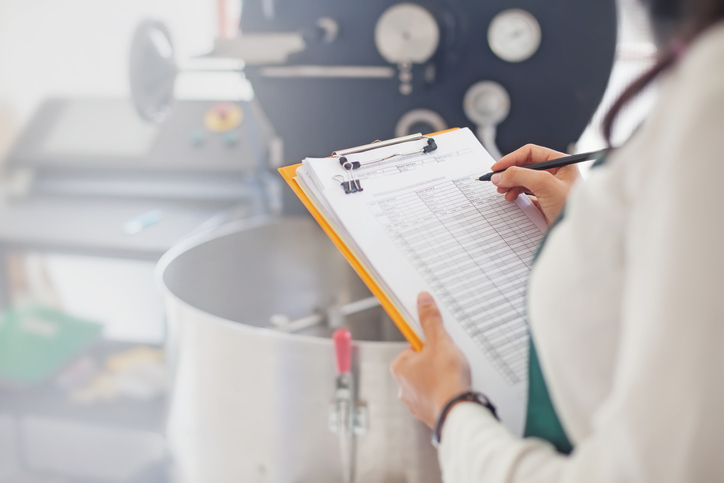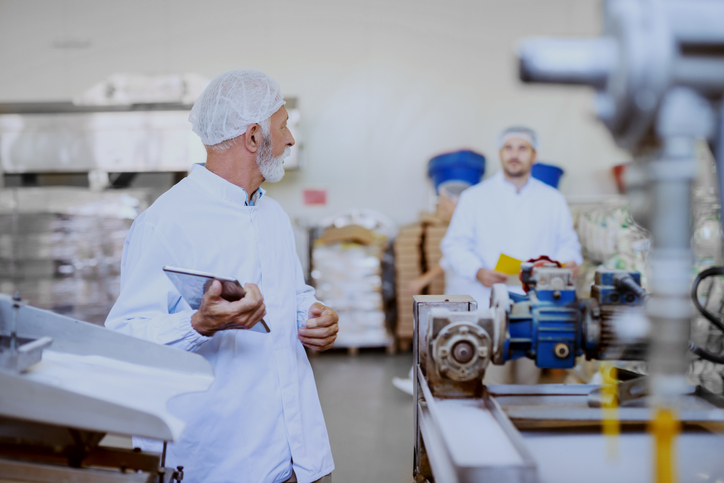Ensuring food safety is a top priority for any business. In any food production environment, manufacturers must follow strict practices to ensure that the food meets a safe standard for public consumption. With guidelines on proper handling, cooking and storage, food safety controls work as a defense against foodborne illnesses and, in many provinces, are required by law. While many factors affect the growth of pathogens in food, time and temperature are two of the most important variables to control along the production chain. Time and temperature controls should be applied to foods including dairy products, eggs, meat, tofu, and cooked rice.
Read on to better understand the effects of time and temperature controls on food safety, and the best methods to control these variables.
How the “Temperature Danger Zone” Affects Food Safety
Understanding the temperature requirements for different foods helps safety and quality professionals within the industry to control bacteria growth. Bacteria growth occurs most rapidly within the range of 5 to 60 degrees Celsius. At those temperatures, bacteria can double in number within only 20 minutes. That’s why this range is often referred to as the “danger zone.” In ensuring food safety, you want to reduce the time that food spends in the temperature danger zone, thereby reducing the time that pathogens have to grow.

Bacteria reproduce most quickly within the ranges of 5 to 60 degrees Celsius
It’s worth noting that not all bacteria grow under the same conditions, and different categories of microorganisms have different optimum growth temperatures:
- Psychrophiles grow optimally in cooler temperatures (0–15 degrees Celsius)
- Mesophiles grow optimally in moderate temperatures (20-45 degrees Celsius)
- Thermophiles grow optimally at higher temperatures (above 45 degrees Celsius)
In general, the temperature danger zone is a good standard to comply with for most foods.

Food safety training teaches the importance of storing food outside of the temperature danger zone
Refrigeration and Freezing Temperatures
Those in food safety training will learn the importance of refrigeration and freezing in food safety control. Freezing is one of the most effective ways to keep food safe for extended periods. It works by:
- slowing the movement of molecules
- causing microbes to enter a dormant stage
Since freezing inactivates any microbes in the food, it prevents the growth of microorganisms that are responsible for foodborne illnesses. It’s important to note that freezing doesn’t kill the microbes—and once thawed, the bacteria may again grow to the same levels as on fresh food.

Refrigeration and freezing are effective methods of ensuring food safety
Unlike in the freezer, fresh foods will spoil over time in the refrigerator. To slow the growth of bacteria that cause foodborne illness, a refrigerator should be kept at four degrees Celsius or lower. Appliance thermometers should be used periodically to check the temperature of the refrigerator.
The Importance of Time Controls
Food safety is not only affected by the temperature it’s stored at, but also by the length of time that it’s stored for. While you want to minimize the amount of time food spends in the danger zone, exposure is likely unavoidable. In that case, it’s important to be vigilant of time controls, as bacteria grow very quickly within that range. With this in mind, you should:
- Check temperatures every two hours
- Never leave meat or poultry out of the refrigerator for more than two hours
- Ensure food with a temperature of over 32 degrees Celsius is not left out for more than one hour
- Throw out food that’s been in the danger zone for more than four hours
Bearing the importance of time controls in mind is a key component of the day to day activities of anyone working as a food safety and quality professional. People in this role will often find the work to be highly rewarding, rooted in their own personal responsibility for helping to keep the public safe from foodborne illnesses.
Are you interested in earning your food safety diploma?
Contact the Academy of Applied Pharmaceutical Sciences for more information on our Food Technology, Safety and Quality program.




